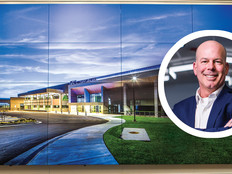Why Desktops Still Matter
Think mobile devices are the only way to go? Think again.
Computing has gone mobile, and smartphones and tablets are all the rage. So who buys desktops today? People who need to do serious work.
The Ford F-150 pickup truck regularly sells better than all other vehicles, because people who need to do real work need real tools. That's true for carpenters and plumbers, and for many computer users today. Think of the desktop as the pickup truck of computing.
While tablets and light notebooks are fine for browsing the Internet and using e-mail, the owners of those devices almost always have a desktop. Look around your school and you'll see desktop users churning through large, complex spreadsheets; layout programs for printed materials; website creation; accounting programs; and any task that requires some device to connect to the computer.
Schools that dabble in video production use desktops for the same reason: They can accommodate add-on video boards for better resolution and faster disks to stream and edit video more efficiently. For better streaming, desktops have slots to add faster networking adapters, or they can use two for higher throughput. Try adding a video board and network controller to your notebook – oops, no slots.
Tablets are great mobile viewing devices. Screen resolution on all tablets has advanced to the point of amazement. But screen size, to remain mobile, must be 10 inches or less. No matter the clarity, sometimes you just need a big screen. I'm typing this on a desktop attached to a 24-inch LCD monitor so I can have a full document page open beside a full browser window.
Productivity studies over the past few years have hyped the value of more screen real estate, whether with one big screen or two smaller ones. Even notebooks with 17-inch screens can't compare to a desktop with a 24-inch screen.
Desktop vs. Notebook: The Great Debate
Yes, people demand mobility, and the “desktop replacement” notebook market has grown over the past several years. But when you look inside schools of all sizes, you find most desktop replacement notebooks chained to a desk.
The price difference between a desktop-replacement notebook and the desktop it replaces can be substantial. Desktops and monitors cost hundreds of dollars less than the notebooks that replace them. Most schools would be better off buying primarily desktops and using the money saved to buy a few loaner notebooks for those occasions when teachers and staff really do need mobility.
Notebook components still cost two to three times as much as desktop components, so users who want to customize their computers should stick with desktops. Need an extra hard drive? A desktop has plenty of room to add one, but there's no room in a notebook. Need an additional 4 gigabytes of RAM? You could throw out your existing notebook RAM and replace it – if your motherboard supports that – or just add another stick of memory to your desktop.
Besides, if you're facing a long day of typing, wouldn't you rather have a real keyboard and not have to type with your forearms mashed against your ribs? Sure, you can buy an external keyboard and monitor for your notebook, but the price goes up. Add that to the cost of the original notebook, and you can probably buy two desktops.







